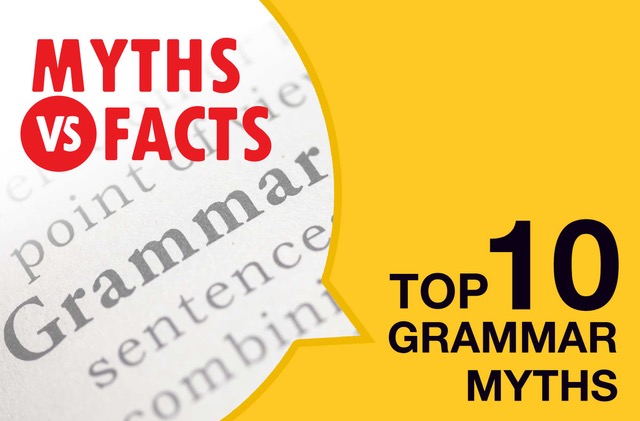1. Never end a sentence with a preposition.
How often have you heard that one? Here’s when you can and when you can’t.
When you can: If you can leave off the preposition at the end of the sentence and the meaning is clear, cut it out.
Ex: Where are you at? (OMG-This one makes my hair stand on end.)
The meaning is perfectly clear without at. Write “Where are you?”
When you can’t: If the meaning changes without the preposition, keep it.
Ex: Where are you from?
If we take off from, we have “Where are you?” This is a totally different question. The first asks location of origin; the second ask current location.
Another when you can’t: When using what’s called an idiom.
- Thanks for stopping by.
- The presentation is all set up.
When is Lola going to calm down?
Grammar review: A preposition is almost always a very small, very common word that shows direction, location or time, or that introduces an object (of in “a basket of apples”). Prepositions are typically followed by an object, which can be a noun (door), a noun phrase (the door), or a pronoun (you).
Current grammar rule reference: See CMOS 5.180.
Fun fact: Winston Churchill did it; he got his hand slapped. His response? “This is the type of arrant pedantry up with which I will not put.” So awkward.
2. Never start a sentence with a conjunction.
Were you taught never to start a sentence with coordinating conjunctions—and, or, but, yet, for, so, nor? I was. Throw that old rule away! Actually, it was never a rule—just preferred practice.
Fact: As many as 10% of sentences in first-rate writing begin with those tiny words.
Caution: Don’t use them at the beginning of sentence all the time. But you can use them on occasion for flexibility, tone, and variety. (See what I did there?)
For emphasis: Her tire was flat, and she was going to be late for work. But that was just the beginning.
For tone: The woods were dark and spooky. And I think I saw a ghost!
That’s the grammar scoop. And I’m sticking to it! Check out CMOS 5.203.
3. “Irregardless” is not a word.
Yes, it’s been in the Oxford English Dictionary since 1912 and Merriam-Webster since 1934. We’ve been arguing about it ever since. Can you use it? Yes, but it’s considered nonstandard English. Consider your audience; some readers might roll their eyes.
“Irregardless” just means regardless.
4. Never use the singular “they”!
It’s okay. Go for it! We don’t use this “he or she ” or “he/she” stuff anymore (unless your style guide insists). Talk about awkward and noninclusive.
Use “they” to refer to singular nouns when you don’t know the gender of the subject.
Examples:
The teacher is here, but they need to set up their presentation first.
The student who receives their acceptance letter should be so happy.
Think about this: Someone named Sam may identify as male or female. We don’t know unless we ask (and that’s a whole other tip). See CMOS 5.48.
Want more details? Go to my blog https://thesavvyredpen.com/singular-they/
5. Never split an infinitive.
“Let it go, let it go!” proclaims Queen Elsa. Yes, do the splits. It works most of the time, as long as your message is clear or it sounds more natural.
Grammar review: An infinitive is the to form of a verb: to go, to be. Teachers often forbade us to place an adverb between “to” and the “go.”
But Star Trek can’t be wrong, right? Think “To boldly go where no one has gone before.”
CMOS says it’s okay. CMOS 5.108
6. Always use “a” before words that start with consonants and “an” before words that start with vowels.
Uh, no. Think again, writers. Use “a” before words that start with consonant sounds and “an” before words start with vowel sounds, including /y/, /h/, and /w/, no matter how the word is spelled.
Ex: an MBA, not a MBA. MBA starts with the consonant sound “em.”
Others: an hour ago, an FBI agent, an X-Files episode
7. “I.e.” and “e.g.” mean the same thing.
I’m afraid not, but even I have to look it up sometimes.
Thanks CMOS for the Latin lesson: “i.e.” comes from id est (“that is”), and “e.g. comes from exempli gratia (“for the sake of example”). So use “i.e.” when you want to rephrase something you’ve already said, and use “e.g.” when you want to offer an example.
See how to punctuate here:
Ex: If the applicant is currently one of our tuition-paying clients (i.e., a student), the fee may be waived.
Ex: The best ingredients for pizza are green—e.g., spinach, artichokes, and green peppers.
Note: No etc. here.
8. Never use a sentence fragment.
Never say never with grammar. You may—sparingly. If you wrote it by mistake, and academic style absolutely says no, fix it. If you wrote it on purpose for emphasis, say yes! That’s the way it is. Period. (See what I did there?)
Truth be told, I’ve had to get used to this one. Consider style guides and audience.
9. Never write a one-sentence paragraph.
Sound familiar? Is your teacher’s rule echoing in your ears? Stick in some cotton. This is a myth!These can work, but avoid overusing the technique.
Fun facts:
- 43% of Charles Dickens’ writing includes them
- The preamble to the U.S. Constitution is a single-sentence paragraph.
10. A run-on sentence is always long.
Heck no. Sometimes they can be incredibly short. And sometimes long sentences are just plain long.
A run-on sentence is simply two complete sentences (each with a subject and a verb) smushed together without the use of punctuation or a conjunction.
Like this: I teach English he teaches math.
Here’s a real rule for you, though. Fix run-on sentences, like this:
I teach English. He teaches math.
I teach English; he teaches math.
I teach English, and he teaches math.

